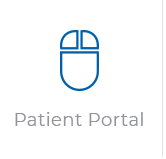How should I keep my ears clean?

If you’ve recently noticed problems with your hearing, a build up of excess ear wax may be to blame. But before you grab a cotton swab, it’s important to understand how to safely clean your ears.
Many people choose to use cotton swabs for routine care of their ears. Although common, this is actually not the most ideal way to keep your ears clean/manage ear wax. The use of cotton swabs not only can cause ear wax (medically known as cerumen) to become packed in the ear canal, but can also lead to irritation/inflammation of the ear canals and even in crease the likelihood of ear canal infection. Additionally, accidents often occur while people are using cotton swabs that can result in damage to the ear canal or eardrum. Cotton swabs should only be used for cleaning the outside portion of the ear and should never be used within the ear canal.
Having some cerumen in the ears is normal and cerumen actually has some protective effect on the ear canals. Cerumen lubricates the ear canals, preventing drying, and has an antimicrobial effect. However, cerumen can be a problem when excess buildup occurs as this can interfere with hearing.
For buildup, commercially prepared ear wax cleaning kits are available at most pharmacies. These kits usually include a bottle of carbamide peroxide and a small bulb syringe. Typically, instructions for use will involve placing a small amount of carbamide peroxide into the ear and allowing some time for it to dissolve the cerumen while the affected ear is being held upwards. After this timeframe, the bulb syringe is then used to irrigate the dissolved cerumen from the ear using warm water.
To prevent on ongoing buildup of cerumen in the ears, a few drop sof mineral oil can also be placed alternately into the ear canals and allowed to remain in the ear canal for approximately 10 min. This can be held in place either by gravity with keeping treated ear upwards for this time or by use of a cotton ball placed at the opening of the ear canal. Afterwards, wiping away any excess/draining oil should prevent this from dripping onto clothing.
If significant cerumen buildup is noted, evaluation by an otolaryngologist is recommended for manual removal. At your appointment, your ENT provider will typically use a binocular microscope and a combination of suction and instruments to clear away the excess wax. It should also be noted that this is the preferred method for cerumen removal if a known hole in the eardrum exists, as the other above-mentioned techniques are not recommended if eardrum perforation is present.
If you are still experiencing hearing problems after your earcanals are free of excess cerumen, it may be time for your ENT to conduct further testing. To learn more about our Otolaryngology Specialists, visit https://mmclinic.com/15/ear-nose-throat-murfreesboro-tennessee.






